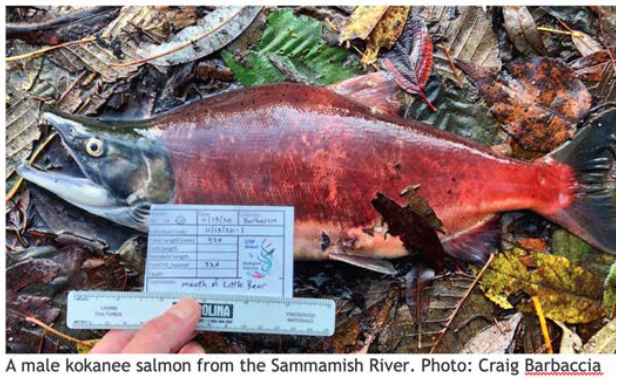Kokanee Genetics and Restoration in Lake Washington Basin Streams

Kokanee restoration in the Lake Washington basin: We are extraordinarily lucky to have a salmon-bearing stream on campus, and even luckier that it is the spawning location for a population of salmon that was thought to have disappeared decades ago, Kokanee salmon were clearly native to our streams and Native Americans and early settlers to our area encountered them in great numbers. Unfortunately, of the three native runs of kokanee in our basin, one is extinct (the “early run”, once found in Lake Sammamish), one nearly went extinct but is now being actively restored (the “late run” in Lake Sammamish), and one (the “middle run”) was thought to be extinct but was rediscovered through genetic research in 2021.
This project has a variety of components, including Monitoring local streams for the presence of kokanee, genetic analysis of kokanee samples, anatomical studies, assessment of stream potential for restoration efforts, and monitoring kokanee fry traps (the latter in spring on Lake Sammamish streams).
Student Outcomes
Students will become knowledgeable about the habitat requirements of juvenile and adult salmon, widely used measures of habitat quality, genetics, and/or basic stream ecology.
Student Qualifications
Sophomores or juniors are preferred, but I’m flexible, Completion of BBIO 180 and ecology (general, wetland, conservation) preferred 6 hours per week minimum. Must be willing to get wet! And Interest in fish, fisheries, and conservation would be great.
Student Responsibilities
This research is ongoing, with most of the field activity in the Fall and Winter terms.
